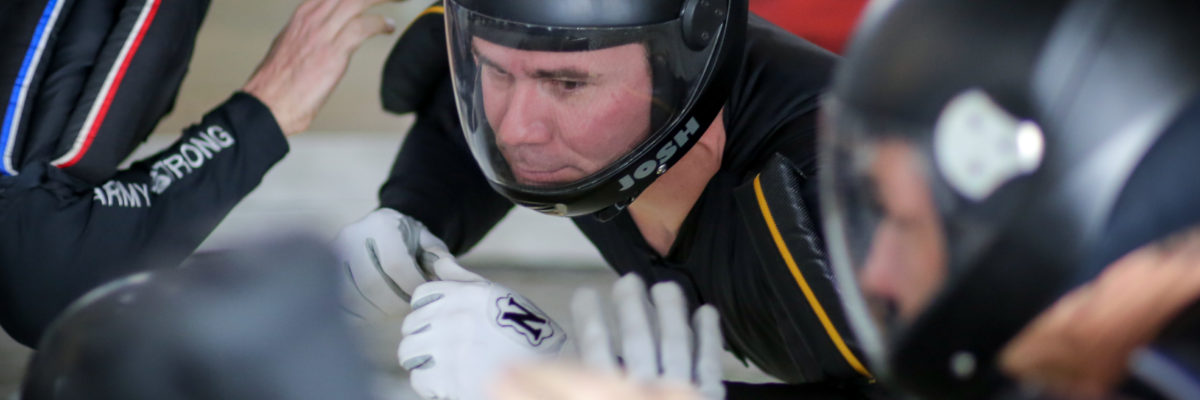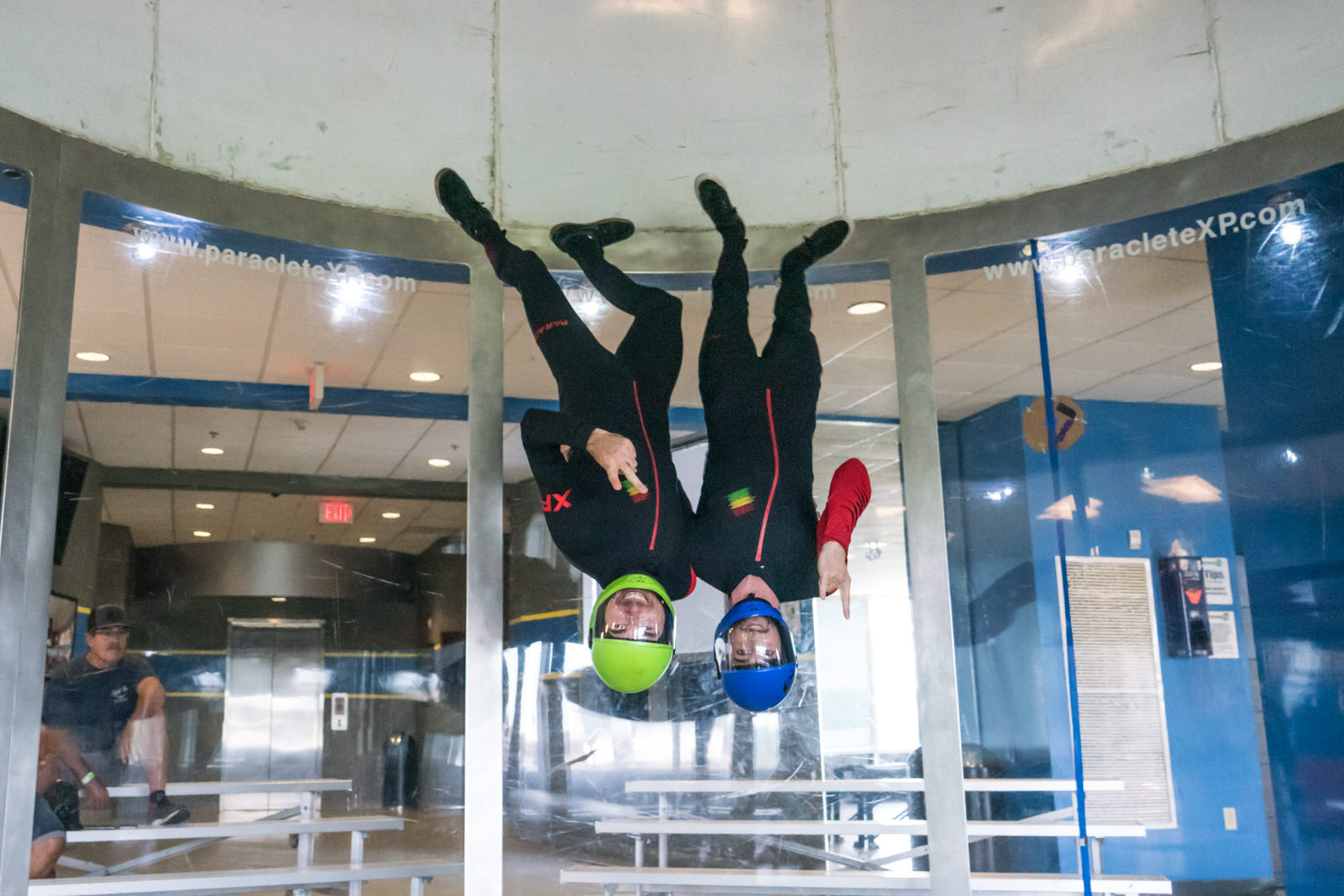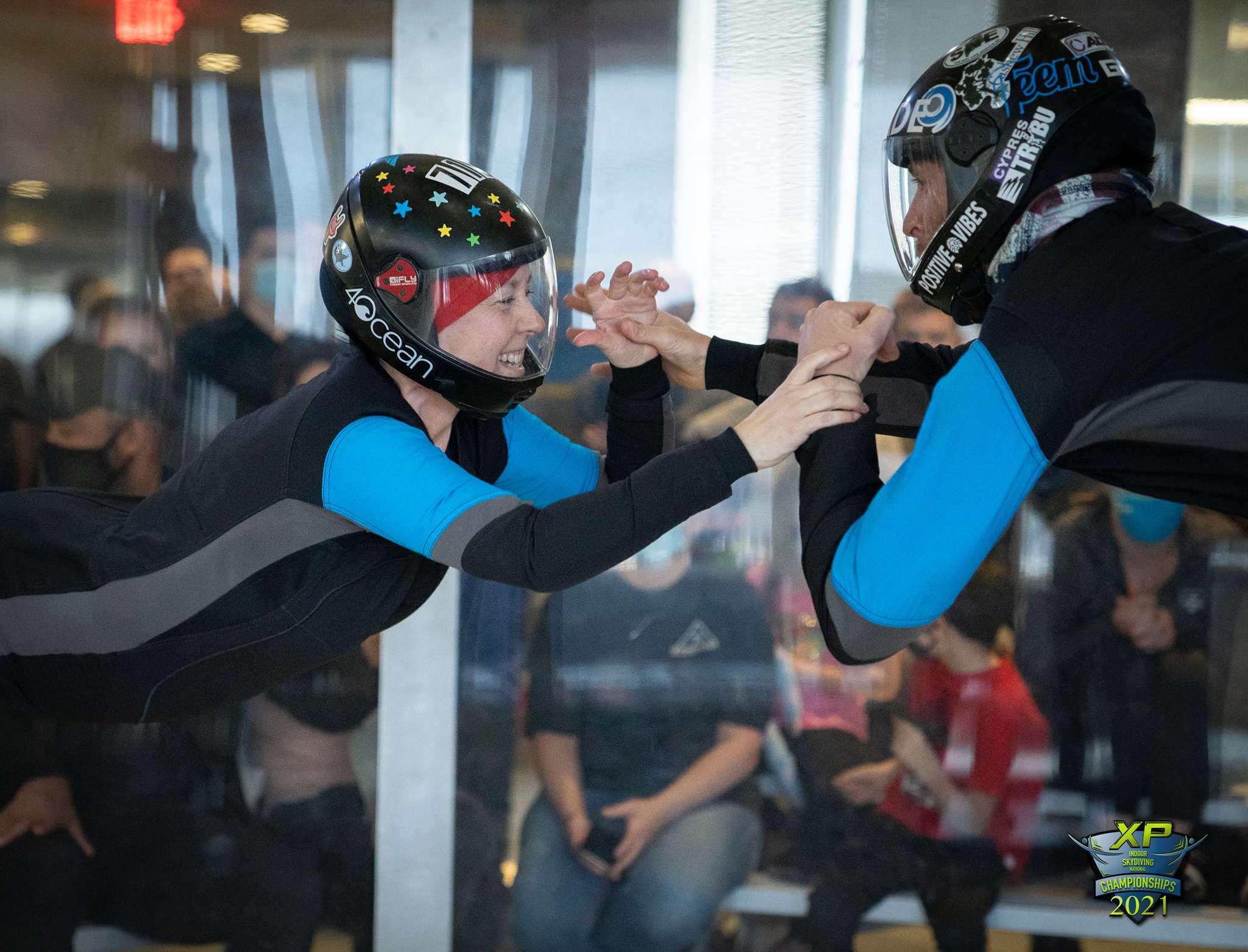
How Does Indoor Skydiving Work?
Tuesday, November 7, 2023
- Team XP
- 11/07/23
- 0
- Indoor Skydiving
The vertical wind tunnel is one of the most useful and exciting skydiving innovations of recent years. Here at Paraclete XP, we’re proud to have one of the largest and most powerful wind tunnels in the world! If you’ve been curious about how indoor skydiving works and how indoor skydiving facilities came about – we’d love to share the details of our state-of-the-art facility and the proud history of indoor skydiving. Pull up a seat!
The History of Indoor Skydiving
Vertical wind tunnels have been around since 1940 when the first 20-foot Vertical ‘Spin’ Tunnel was built at the NASA Langley Research Center in Virginia. The term ‘indoor skydiving’ wasn’t introduced until 1964 when Jack Tiffany became the first recorded human to ever try to fly and to succeed in a wind tunnel at the Wright-Patterson Air Force Base in Ohio.
In 1979, a Canadian inventor named John St-Germain built the first first wind tunnel intentionally designed for bodyflight. He wanted his children to experience the feeling of freefall in what he considered to be a safer environment. The tunnel featured a propeller with a DC-3 engine pushing air from below with padding around the flight chamber for flyers to fall safely onto. St-Germain sold the concept to Les Thompson and Marvin Kratter in 1982, who each went on to build tunnels in Pigeon Forge, TN and Las Vegas respectively.
Since then, indoor skydiving technology has significantly advanced and indoor skydiving has become more accessible to eager flyers all over the globe. One major improvement was the wall-to-wall revolution and open-flow design developed by SkyVenture in Orlando, FL. This was a new design in which the fans were located at the top of the flight chamber, pulling air up vertically. Things really took off when SkyVenture introduced the first modern recirculating wind tunnel in 2004. Wind tunnels have opened at an ever-increasing rate and now indoor skydiving is accessible in almost every major city.

How Indoor Skydiving Works at Paraclete XP
There are several kinds of wind tunnel technologies out there with different designs but all simulate the feeling of freefall when skydiving. Each indoor skydiving facility is designed to push or pull heavy gusts of wind through a vertical flight chamber. When you are “flying”, you are actually being held up by the wind, floating in mid-air, much like the experience of actual outdoor skydiving freefall.
Paraclete XP SkyVenture is currently the largest vertical wind tunnel in the United States and one of the largest windy tubes on the planet. The tunnel is 16.5 feet in diameter and has four giant fans running at 541 horsepower each (2,164 hp total) from the top of the building. The airflow is redirected in a recirculating motion by using turning vanes. The air goes down the sides of and underneath the building, and back up the middle through the flight chamber. The recirculation process and turning vanes keep the air inside the flight chamber turbulence-free, making for a less bumpy flight that truly simulates the air in real-deal freefall.
The vertical wind tunnel is enclosed by strong, thick glass that is 53 feet tall. A sturdy cable net “floor” prevents instructors and students from falling towards the bottom. Wind tunnels can reach speeds upwards of 180 mph. The fan speed is adjusted according to the weight of each skydiver at the instructor’s discretion.
Indoor vs Outdoor Skydiving
Does indoor skydiving feel like the real thing? Yes, indoor skydiving beautifully simulates the freefall portion of the skydive. However, wind tunnels weren’t always popular amongst skydivers; you could even say there is still a bit of tension there. This is mostly due to the fact that wind tunnels are unable to simulate “the hill” during skydiving, right when a skydiver exits the airplane, and, of course, the wonderful views.
Undoubtedly, skydivers agree that wind tunnels are a great tool to use in order to improve their freefall skills. As such, wind tunnels have become a popular place to catch world-class skydivers in the act of training and teaching others how to fly like a pro. Paraclete XP is proud to be home to many champion skydivers and enthusiasts alike.
Why is indoor skydiving so short? It’s actually not short at all. The freefall portion in outdoor skydiving usually lasts 45 to 60 seconds. Most first-timer wind tunnel flights are broken up into two one-minute flights which, when compared to outdoor skydiving, is more than double the freefall time! One session in the windy tube is the equivalent of making two full-altitude skydives! This is why skydivers are able to progress rather quickly when using a wind tunnel for flight training rather than perfecting their skills on a 45-second freefall.

Indoor Skydiving Safety
While indoor skydiving is technically safer than skydiving, there are a few risks involved which is why you will be asked to fill out and sign a waiver before your flight. We take safety very seriously at Paraclete XP, therefore, before flying at an indoor skydiving facility, all participants will receive a comprehensive pre-flight briefing from trained instructors who will be assisting you on your flight. This ensures that everyone understands and accepts the safety rules in order to fly properly and safely in the wind tunnel. Each flight includes a helmet, flight suit, ear plugs, and gloves if needed
Now that you know how indoor skydiving works, you can appreciate the beauty of its inner workings as you’re floating mid-air at Paraclete XP. Book your adventure with us today!
Tags: indoor skydiving, wind tunnel

Everyone was extremely friendly,fun and helpful! We were from out of town drove three hours and were running late from bad weather we had a group of 10 and they called us to tell us to be careful in the weather and to take our time on arriving. Our instructor was amazing we had 3 three yr olds and he did an amazing job with all of them!
Google Review
Copyright © 2024, Paraclete XP Indoor Skydiving, All Rights Reserved.
DropZone Web Design & Marketing by Beyond Marketing, LLC